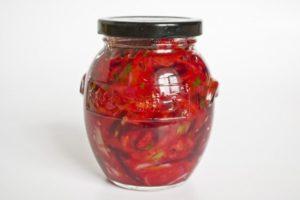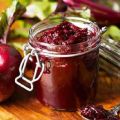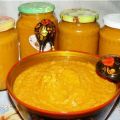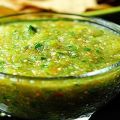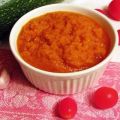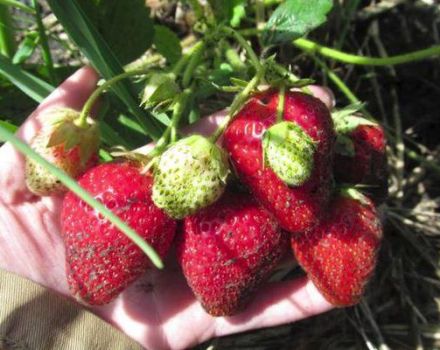Recipes for making onion caviar for the winter with step by step instructions
Blanks for the winter are usually made in summer or autumn. But onion caviar can be made at any time of the year. It is versatile and goes well with any main course as a complement. It can also be used as a snack or simply spread on bread. In addition, caviar will help boost immunity during the cold season. Next, a method of how to quickly cook onion caviar will be described in detail, as well as a recipe for preparations for the winter.
Features of harvesting onion caviar for the winter
Onion caviar, cooked without special processing and sterilization of the container, will stand in the refrigerator for a month and will not deteriorate. However, this option is not suitable for long-term storage of blanks for the winter.
So that they do not deteriorate and stand until winter, you need to observe the cooking features:
- containers must be sterilized for at least 20 minutes;
- you need to fill the jar not to the very top, leaving one and a half to two centimeters to the brim;
- it is impossible to drastically change the storage temperature and carry away full cans from heat to cold, otherwise they may burst.
The specifics of the choice of ingredients
The main ingredient in this caviar is onion. Cooking is easier if you choose large heads for this. In the classic recipe, ordinary onions are used, you can also combine them with white or red - this will make the taste of the dish more interesting.
As an experiment, you can roll up each can with different combinations to find the perfect recipe for yourself later.
Usually tomatoes are also present in onion caviar recipes, but you can replace them with tomato paste. Carrots are also a frequent ingredient in caviar, with its help you can adjust the spiciness: the more you use them, the softer and softer the taste. Sunflower oil can be substituted for olive oil or corn oil.

For acid lovers, add lemon juice or wine vinegar. To add spice, add garlic, black pepper or chili to the caviar mass. Aromatic herbs will also not be superfluous: parsley, dill, basil will do.
Preparation of containers
Blanks for the winter are traditionally stored in glass jars. It is these dishes, in combination with tight lids, that allow long-term storage. However, the most important rule should be remembered: the dishes should not only be clean, but sterile. This applies not only to cans, but also to lids.
How can you sterilize glass jars at home:
- in the oven;
- in the microwave;
- steamed, over a saucepan.
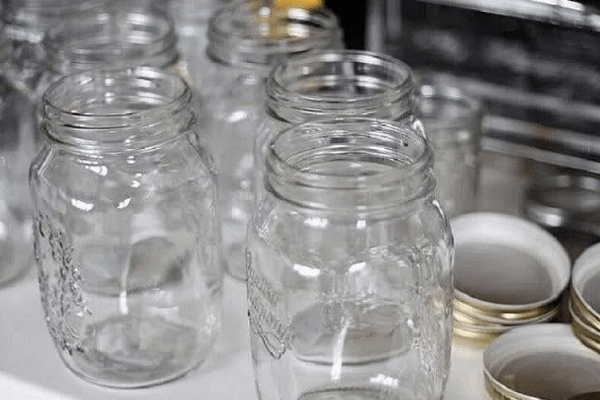
It is also important to check the jars for cracks and chips.Sterilization lids should be boiled in water for 15 minutes.
Methods for preparing caviar from onions
Onion caviar is undeservedly inferior in popularity to squash and eggplant. But it is much easier to prepare it: you will need few ingredients, and it will take less time to cook.
For blanks for the winter, the classic version with sterilization of cans is better. However, you can do without it if you do not plan to leave onion caviar for a long time without attention.

Classic recipe
This is the most popular recipe for long-term storage onion caviar. It is better to prepare sterilized dishes in advance so as not to be distracted from cooking.
Required Ingredients:
- 1 kilogram of onions;
- a can of tomato paste or a pound of tomato;
- 60 milliliters of sunflower (or any other) oil;
- salt and spices to taste.
Step-by-step instructions for cooking onion caviar for the winter:
- Peel the onion and then chop coarsely.
- Fry half of the chopped onion in a pan over low heat. You need to constantly stir the contents of the pan and make sure that the onions do not burn. Frying for 15 minutes will suffice.
- The rest of the onion should be scalded with boiling water and discarded in a colander.
- Now you need to mix all the onions and simmer in a saucepan for 20 minutes. There you need to add tomato paste (or tomatoes) and spices. Remember to stir the vegetables constantly.
- Then the resulting mixture should be passed through a meat grinder or chopped with a blender.
- After that, the mixture should be stewed for a couple of minutes in a pan.
- Without waiting for cooling, the caviar must be transferred to prepared jars (after sterilization, they should be just warm).
- A cotton cloth should be placed at the bottom of the pan and only then the jars should be placed. Then the pan is poured with hot water (temperature 80 degrees). So the cans should stand for half an hour, only then they can be tightly closed with lids.
- The workpieces should cool to room temperature, after which they can be removed to a cool place.
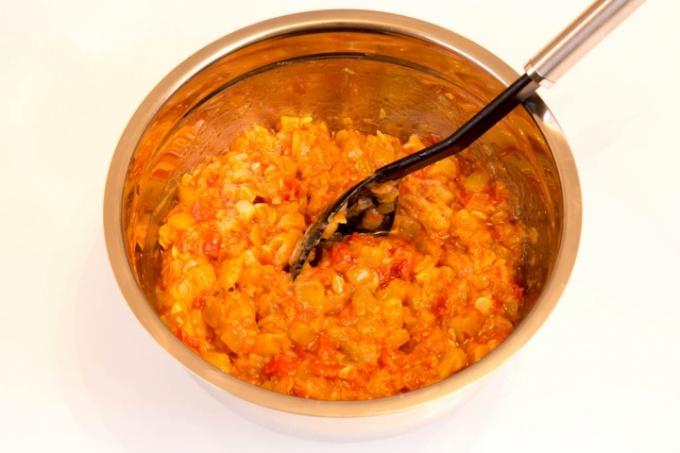
Option without sterilization
In the event that there is no need for long-term storage of onion caviar, then you can cook it without sterilizing the containers.
Such a blank can be stored in the refrigerator for about a month. In this case, the cooking recipe is no different from the one described earlier, except for the last steps.
It is enough to put the onion caviar in a clean dish, let it cool down and put it in the refrigerator. It is better not to eat immediately, but let it brew for at least 12 hours - then the taste will open better.
How and how much can you store
Onion caviar is stored at temperatures from +2 to +7 degrees. For this, storage in a dry cellar, on the balcony or in the refrigerator is suitable. It is important to monitor the cold snap in the room where the workpieces are stored: at sub-zero temperatures, the cans may burst.
You should not leave stocks with onion blanks for more than a year - there is a risk that they will deteriorate. An opened jar should be kept in the refrigerator for no longer than two weeks.
